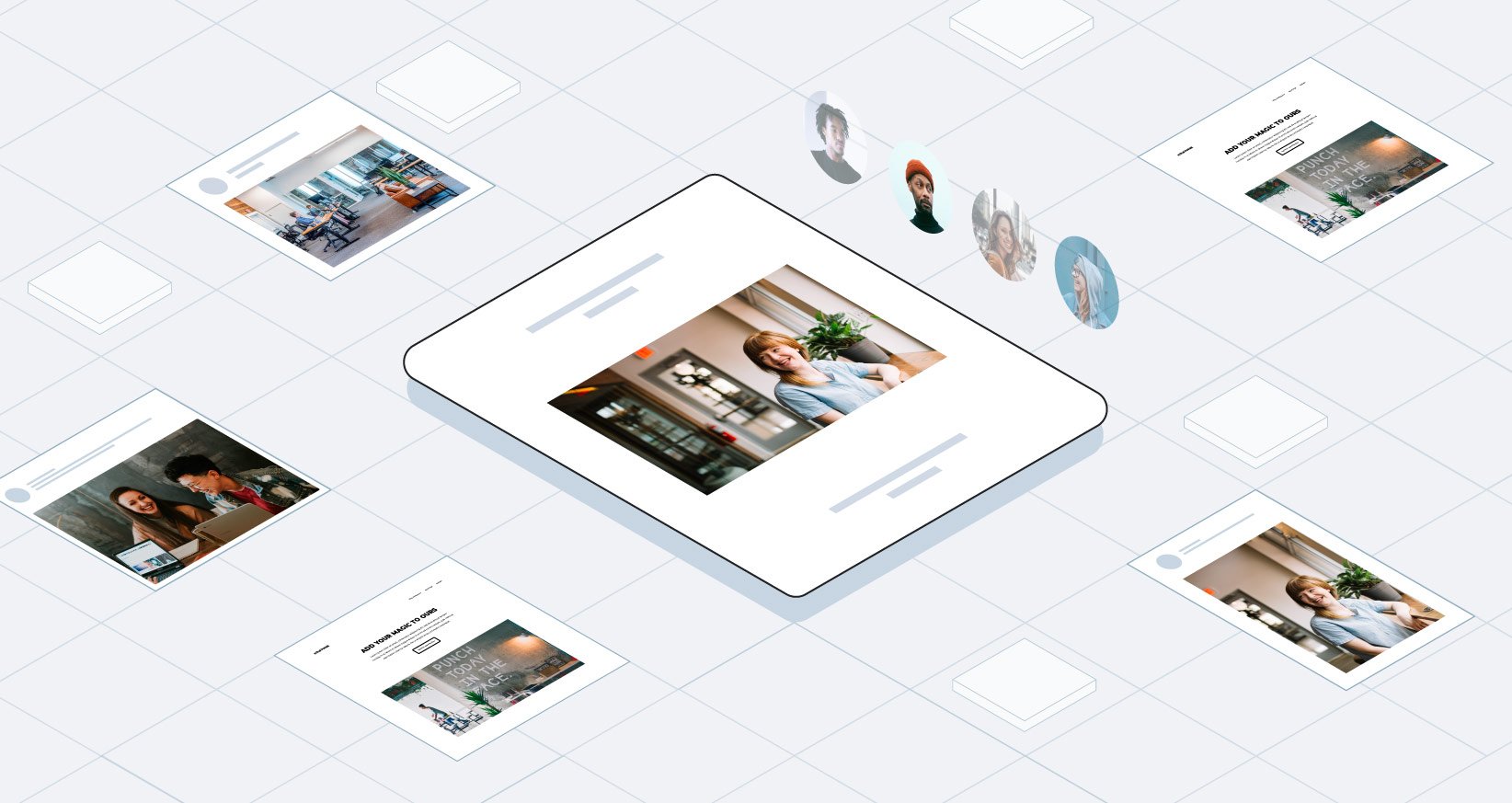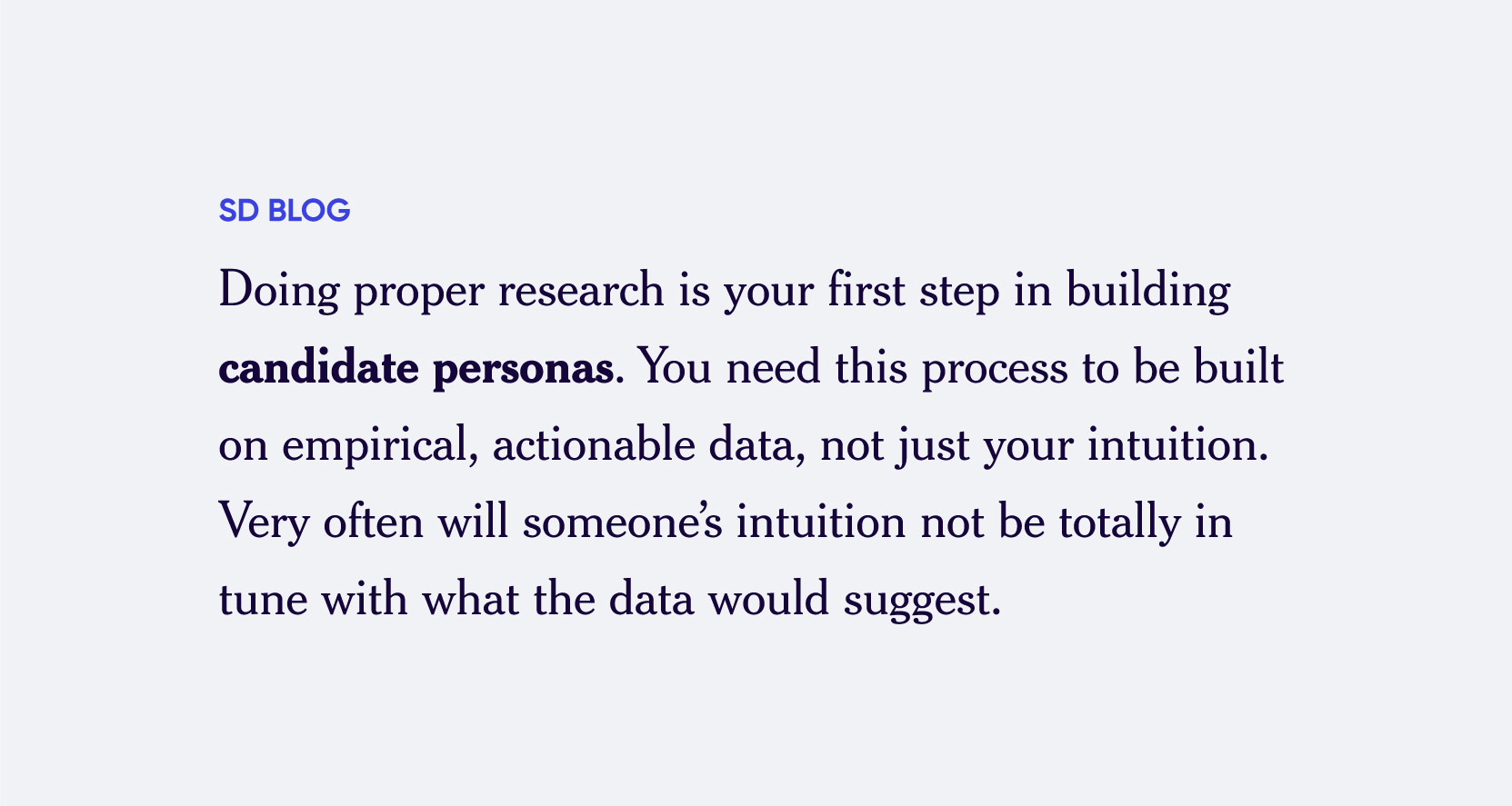Traditionally, the way companies have gone about talent acquisition has followed a transactional model. Companies announce that they have a job opening through various channels (word of mouth, ads, job portals) and they wait for job-seekers to apply to it. This strategy has worked for as long as anyone can remember, but that doesn’t mean it’s the best approach.
The main problem with the transactional approach is that it’s limited to job-seekers. This means that you can only ever hope to recruit someone who is actively looking for a job. Out of all the people qualified for the position, only a portion of them will be actively job-seeking. TalentLyft found that 70% of candidates are job-seekers and that only 36% of candidates are actively searching for a new job. This portion of job-seeking candidates varies depending on the profession as well. For example, engineers are notoriously non-job-seeking, meaning that if you’re trying to recruit an engineer through traditional transactional means, you’ll only have access to a tiny piece of the pie, and your conversion rates will be minuscule.
If marketing has taught us anything, it’s that more often than not consumers don’t even know they wanted (or even needed) a product or service before the company showed it to them proactively. Lead generation is one of the pillars of marketing, and recruitment can learn a lot from marketing. Lead generation can significantly improve your recruiting strategy on many fronts. Here are a few improvements that come with lead generation over transactional recruitment:
- Larger pool of candidates
- Shorter hiring times Lower hiring costs
- Stronger brand and clearer culture for the employer
- Better quality-of-hire
- More enjoyable experience for candidates
We think lead generation should also be seen as a pillar of recruitment, and so, how should recruiters go about creating a strong lead generation engine for their talent acquisition?
Creating relevant content for talent acquisition
One of the first lessons we can learn from sales and marketing is the need for alternative content for the customer during the sales process. The longer your sales process is, the more you’ll need to expose your customer to alternative content that will complement your product. In talent acquisition, the longer the recruitment process is, the more you should aim to provide your prospect with alternative content to refine the entire process.
What does this alternative content look like when it comes to talent acquisition? The appropriate content will differ depending on what kind of talent you’re targeting. Here’s a list of some auxiliary content forms that will generally be good for your TA strategy.
Blogs
Having blogs that relate to and lead to your careers page is a great place to start. Blogs are a medium that allows for both a large amount of freedom but also a large amount of precision in the content. Career pages are often lacking in information for visitors: you’ll (maybe) learn what you need about the job posting, but there isn’t much information about the company that’s posting that job. This is where career blogs come in. You can make blogs to complement your job postings, giving the information that is lacking in the job posting. For example, career blogs can communicate more about your company’s culture to a user than a job posting ever could. You can also discuss the news that would be valuable to a job-seeker, like having a blog about the new office you have opened.
At the same time, blogs can serve as a bridge to job postings. Users won’t necessarily see a job posting first and then go looking at your career blogs for more information. Sometimes people will just end up on a blog you posted. In that case, you can use blogs as an opportunity to expose readers to your job postings. This can easily be done by adding a CTA or a simple hyperlink to your job postings within your blog post.
Ebooks
Ebooks are similar to blogs, in that they can be used as auxiliary content for your careers page. They have a lot of the same perks that blogs do, with the main difference being that ebooks are generally much longer and much more in-depth than blogs. Blogs typically won’t go beyond 2000 words, and with that kind of a word count, it’s hard to get a lot of details in on any specific topic. Ebooks have much more liberty when it comes to depth, and if a user is really interested in learning as much as possible about your company in written form, then ebooks are what they’re looking for. Ebooks can compile information on a wide range of topics without compromising the amount of detail per topic. While we recommend focusing on blogging more heavily than on creating ebooks, it’s important to have the resources available for those that seek them. Don’t forget to regularly maintain and update your written content!
Webinars
Webinars are online seminars that are a mix of presentations done by your company with conversations with the audience. It’s the perfect mix of information, networking, and screening. Webinars allow for a more personalized experience because the content is delivered in real-time and responded to in real-time by the audience. Open conversation and question periods following presentations allow prospects to learn exactly what they want from you while at the same time letting you learn about them.
Having someone from your company directly communicating with a prospect is so much more convenient than a search engine. A member of the audience can ask the exact question that’s on their mind, and they don’t have to hope that there’s a blog written about exactly what they’re asking about. At the same time, your TA team can learn about the questions and concerns prospects have about your company in real-time, and in an almost face-to-face environment. There is only so much you can learn about people through surveys and data. This personal (not personalized!) experience will be extremely valuable for your TA team.
Webinars are the dark horse of TA. Webinars are incredibly useful to recruitment and yet are so underused. Implementing webinars into your lead generation engine should be a priority for you because it is an area that can so easily net you a competitive advantage over other companies in your industry because it’s an area where everyone else is so behind.
Events (hackathons, workshops, meetups, etc.)
Having live in-person events should be the final step toward having a complete content package in your lead generation engine. You already have extensive written content with blogs and ebooks. You’ve also added the semi-personal webinars. To top it all off, you want to add in fully personalized and social content through events.
There are a lot of different kinds of events you can organize, and they largely depend on what kind of candidates you’re looking for. For example, hackathons are great when it comes to programmers and various software designers, but they won’t be too useful if you’re trying to hire people for your HR department.
What’s important with events is to clearly identify what kind of candidate you’re looking for and understand their interests both as a professional but also as a person. Events are ephemeral and in-person (unlike blogs and ebooks), so it’s important that you personalize them as much as possible. Figure out what your candidates will like, from theme to activity, to a number of people, to time and location. Once you know your candidates well, you’ll be able to design an event that will bring the most out of your candidates while simultaneously giving the candidates the best possible image of your company.
Here are three examples of events and how they differ slightly from one another:
- Hackathons. More competitive, more intense, more productive. Usually longer events.
- Workshops. More educational, more interactive. Usually shorter events.
- Meetups. More casual and relaxed, more social. Usually shorter events.
These aren’t the only kinds of events you can organize, but this goes to show that each type of event has its own flavor, and it’s up to you to figure out which flavor would be best suited for your candidates.
Creating a landing page for candidates
Once you have all your auxiliary content, it’s important to create a centralized place for your candidates to go. A landing page is the best way to do this. A landing page is a website that is different from your company’s main website, which focuses specifically on recruitment. This website is designed in order to promote job openings, events, and content for your company. The landing page is, in other words, a nexus for candidates to have access to your auxiliary content as well as your job postings.
Landing pages are especially useful when it comes to filling niche positions in your company. Sometimes it’s hard to find the right candidate for a very specific job. In those cases, you can design your landing page to specifically target your ideal candidate, increasing the chances that you’ll find the perfect person for the job, and that they’ll find you.
At SmartDreamers, one of our specialties is in helping you create landing pages that are conducive to lead generation. Try a demo of SmartDreamers to test our Landing Page CMS service to help you integrate strong landing pages as a part of your lead generation machine.

.jpg)






